▼ Gobindo Bhog: Premium Bengal rice gets GI tag [08-30-17]
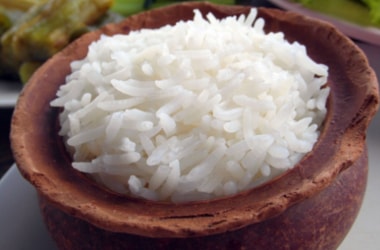 The premium aromatic variety Gobindo Bhog rice has received the GI tag. The premium aromatic variety Gobindo Bhog rice has received the GI tag.
More farmers are taking up its cultivation since its gives higher productivity and remuneration.
Some 600 farmers have sown the rice for the first time this crop season (August-November).
This has increased the number of farmers opting for the aromatic rice to over 1,800.
The Bidhan Chandra Kishi Viswavidyalaya (BCKV), through a programme, launched since 2009, has extended cultivation of the rice to new areas and promoted it among a larger number of farmers.
According to a study by the BCKV, 80 per cent of the rice produced is consumed locally, while 20 per cent is exported.
The area under cultivation for this variety is expected to go up further by over 50 per cent this crop year compared with last year.
Having started the programme with less than 100 farmers in Nadia district in 2009, BCKV has brought in 1,800 farmers across 18 blocks of the South Bengal districts of Murshidabad, Burdwan, Hooghly, Nadia, North 24 Parganas and South 24 Parganas.
The area under cultivation has increased 10-fold in 2012 from a mere 45 acres four years ago.
Paddy productivity of this premium variety has gone up by more than 40 per cent to about 1.3 tonnes an acre, he said.
Currently, this variety fetches a price of Rs 2,800-3,000 for a 60-kg bag.
|
▼ 50, 000 kms of roads lit by Street Lighting National Programme [08-21-17]
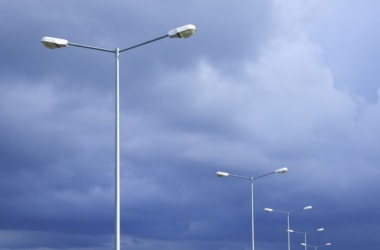 The Government of India’s Street Lighting National programme (SLNP) has illuminated 50,000 KM of Indian roads. The Government of India’s Street Lighting National programme (SLNP) has illuminated 50,000 KM of Indian roads.
This is with installation of 30 lakh LED street lights across the country.
With this milestone Energy Efficiency Services Limited under Ministry of Power, has become the world’s largest street light management company.
The installation of 30 lakh LED street lights has resulted in 39 crore kWh of annual energy savings.
This is with avoided capacity of over 104.19 MW to the Urban Local Bodies (ULBs).
Further it has also helped in reduction of 3.29 lakh tonnes of CO2 annually.
SNLP: Know More
- Under SLNP, Rajasthan is leading the country with an installation of 7.85 lakh LED street lights.
- This is followed by Andhra Pradesh and Gujarat with 6.03 lakhs and 5.4 lakhs respectively.
- Presently, EESL is retrofitting 15,000 conventional lights with LED street lights every day. Project is near completion in the states of Himachal Pradesh, Tripura and Gujarat.
- EESL is also implementing a special heritage lighting project in Kashi region of Uttar Pradesh where 4,000 lights are being installed.
- The programme has also recently commenced in the cities of Chandigarh and Port Blair, Andaman and Nicobar Islands.
- Further, the procurement price of the LED Street Lights has been reduced from Rs. 135/watt to Rs. 80/watt due to mass procurement of the lights.
|
▼ Public sector, state owned companies to be strategically disinvested [08-17-17]
The Cabinet on Aug 16, 2017 decided to set up a high-powered committee of Union ministers, including Finance Minister Arun Jaitley, to expedite strategic disinvestment of state-owned companies.
The Cabinet gave its nod for setting up an Alternative Mechanism (AM) consisting of Finance Minister, Road Transport and Highways Minister, and Minister of Administrative Department, to decide on the matters relating to strategic disinvestment.
The government has budgeted to raise INR 72,500 crore through stake sale in PSUs.
This includes INR 46,500 crore from minority stake sale, INR 15,000 crore from strategic disinvestment and INR 11,000 crore from listing of PSU insurance companies.
|
▼ Reforms introduced by Economy Survey 2017 Part 2 [08-14-17]
 According to the Survey, managing and reducing the various risks in agriculture activities can make the sector resilient, increase profitability and can ensure stable income flows to the farmers. According to the Survey, managing and reducing the various risks in agriculture activities can make the sector resilient, increase profitability and can ensure stable income flows to the farmers.
The following reforms are suggested for increasing productivity in agriculture and allied sector:
- To address the price risks in agriculture and allied sectors, marketing infrastructure along the entire value chain needs to be built and strengthened.
- To address production risks, the share of irrigated area should be expanded by increasing the coverage of water saving irrigation systems like micro irrigation systems.
- To increase productivity of crops, standards should be set and enforced for better quality, pest and disease resistant seeds.
- Trade and domestic policy changes should be announced well before sowing and should stay till arrivals and procurement is over.
- To enhance women’s involvement in the dairy projects, funds should be earmarked through appropriate mechanisms.
- Providing timely and affordable formal and institutional credit to the small and marginal farmers is the key to inclusive growth.
- Regime based on timely interventions needs to be adopted.
Industry and Infrastructure- Railways should go for more non-fare sources along with station redevelopment and commercially exploiting vacant buildings at the station, monetizing land along tracks by leasing out to promote horticulture and tree plantation, and through advertisement and parcel earnings.
- During the last few years the non-major ports are gaining more share of cargo handling compared to major ports. It is required to develop non-major port and also enhance their efficiency and operational capacity.
- Reforms such as privatization/ disinvestment of Air India, creation of aviation hubs and reconsidering the 0/20 rule are some suggestions to improve Indian airlines’ share in the international market.
Social Infrastructure, Employment and Human Development- India, is emerging as a knowledge based economy, poised for double digit growth, and needs to strengthen social infrastructure by investing in health and education.
- The education policies need to be designed with focus on learning outcomes and remedial education with interventions which work and maximize the efficiency of expenditure.
- There is need for bio-metric attendance of school staff, independent setting of examination papers, neutral examination and for DBT for schools.
- There is need to adopt outcome measures for the education and skilling activities to ensure improvement in delivery of schemes/ programmes.
- In order to make the labour market system dynamic and efficient, the government has taken several reforms/initiatives, both legislative as well as technological such as notification of ‘Ease of Compliance to maintain Registers under various Laws Rules, 2017’ and introduction of e-Biz Portal.
- These registers/forms can also be maintained in a digitized form.
- Government has been imparting short term skill training through Pradhan Mantri Kaushal Vikas Yojana (PMKVY) and long term training through Industrial Training Institutes (ITIs).
Model Skill Centers are being set up in every district of the country under Pradhan Mantri Kaushal Kendra Scheme. The emphasis is on enhancing the quality of skill training programmes and making a competency-based framework with giving individuals an option to progress through education, training, prior learning and experiences. - There has to be concerted efforts by the Central and State governments to reform the health sector, by addressing quality issues, standardising rates for diagnostic tests, generating awareness about alternative health systems and introduction of punitive measures like fines on hospitals and private health providers for false claims through surgery, medicines etc.
- For more equitable access to health services, government should provide health benefits and risk cover to poorer sections of the society.
- Towards addressing the challenges in health sector, the Government has formulated the National Health Policy, 2017, which aims at attaining the highest level of good health and well-being.
- This is through a preventive and promotive health care orientation in all developmental policies, and universal access to good quality health care services, without anyone having to face financial hardship as a consequence.
- Addressing the social security of large number of vulnerable workers in the informal economy should be prioritized by the Government along with ensuring the safety and security of women to raise their participation in economic activities.
|
▼ Economic Survey 2016-2017 Volume 2 - Highlights [08-14-17]
The Survey notices a rekindled optimism on structural reforms in Indian economy.
Various factors such as launch of the GST; Positive impacts of demonetization; decision in principle to privatize Air India; further rationalization of energy subsidies and Actions to address the Twin Balance Sheet (TBS) challenge contribute to this optimism.
The document also adds that a growing confidence that macro-economic stability has become entrenched is evident because of a series of government and RBI actions and because of structural changes in the oil market have reduced the risk of sustained price increases.
However the Survey cautions that anxiety reigns because a series of deflationary impulses are weighing on an economy, yet to gather its full momentum and still away from its potential.
These include: stressed farm revenues, as non-cereal food prices have declined; farm loan waivers and the fiscal tightening they will entail; and declining profitability in the power and telecommunication sectors, further exacerbating the TBS problem.
Examining if India is undergoing a structural shift in the inflationary process toward low inflation, the Survey notes that the oil market is very different today than a few years ago in a way that imparts a downward bias to oil prices, or at least has capped the upside risks to oil prices.
Also Farm loan waivers could reduce aggregate demand by as much as 0.7 percent of GDP, imparting a significant deflationary shock to an economy.
Spurt in New Tax Payers and Reported Income After Demonetization; 5.4 lakh New Tax Payers Post-Demonetization.
Demonetisation’s impact on the informal economy increased demand for social insurance, particularly in less developed states.
MGNREGS and its implementation by the Government have met the programme’s stated role of being a social safety net during times of need.
It also adds that sustaining current growth trajectory will require action on more normal drivers of growth such as investment and exports and cleaning up of balance sheets to facilitate credit growth.
The ratio of stressed companies in the power sector (defined as the share of debt owed by companies with an interest coverage (IC) ratio of less than 1) has been steadily rising this year, reaching 70 percent, with an associated vulnerable debt of over INR 3.6 lakh crore.
The telecommunications sector has experienced its own version of the “renewables shock” in the form of a new entrant that has dramatically reduced prices for, and increased access to, data, thereby benefitting - at least in the short run - consumers.
After launching of services by the new entrant in September 2016, the average revenue per user (ARPU) for the industry on aggregate has come down by 22 percent vis-à-vis the long term (December 2009-June 2016) ARPU, and by about 32 percent since September 2016.
As regards Outlook for Growth 2017-18, Survey (Volume I) had forecast a range for real GDP growth of 6.75 percent to 7.5 percent for FY 2018.
For Outlook for Prices & Inflation 2017-18, the Survey notes the outlook for inflation in the near-term will be determined by a number of proximate factors, including:
The outlook for capital flows and exchange rate which in turn will be influenced by the outlook and policy in advanced economies, especially the US; - the recent nominal exchange rate appreciation;
- the monsoon;
- the introduction of the GST;
- the 7th Pay Commission awards;
- likely farm loan waivers; and
- the output gap
The document says that the fact that current inflation is running well below the 4 percent target, suggests that inflation by March 2018 is likely to be below the RBI’s medium term target of 4 percent. Review of Economic Developments: Economic Survey 2016-2017- Real economy grew by 7.1 per cent in 2016-17 compared with 8 percent the previous year. This performance was higher than the range predicted in the Economic Survey (Volume I) in February.
- This growth suggested that the economy was relatively resilient to the large liquidity shock of demonetization which reduced cash in circulation by 22.6 percent in the second half of 2016-17.
- The apparent resilience was even more marked in nominal growth magnitudes because both nominal GVA and GDP growth accelerated by over 1 percentage point in 2016-17 compared with 2015-16.
- Annual inflation averaged 5.9 per cent in 2014-15 and has since declined to 4.5 per cent in FY 2017. More dramatic have been developments during 2016-17- inflation declined sharply from 6.1 percent in July 2016 to 1.5 percent in June 2017.
- The sharp dip in WPI inflation in late FY 2015 and throughout FY 2016 owed to the deceleration in global commodities prices, especially crude oil prices.
- With global commodity prices recovering and the ‘base effect’ (low inflation in the previous year) giving an upward push, wholesale inflation perked up during FY 2017
- With the green shoots slowly becoming visible in merchandise trade, and robust capital flows, the external position appears robust, reflected inter alia in rising reserves and a strengthening exchange rate.
- The current account deficit narrowed in 2016-17 to 0.7 percent of GDP, down from 1.1 percent of GDP the previous year, led by the sharp contraction in trade deficit which more than outweighed the decline in net invisibles
- Export growth turned positive after a gap of two years and imports contracted marginally, so that India’s trade deficit narrowed to 5.0 per cent of GDP (US$ billion) in FY 2017 as compared to 6.2 per cent (US$ 130.1 billion) in the previous year.
|
▼ India ratifies second commitment period of Kyoto protocol [08-11-17]
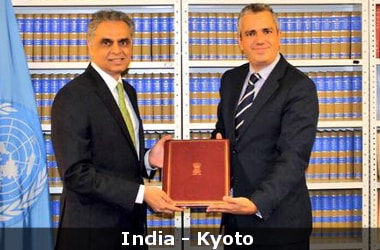 India has ratified the second commitment period of the Kyoto Protocol that commits countries to contain the emission of greenhouse gases, reaffirming its stand on climate action. India has ratified the second commitment period of the Kyoto Protocol that commits countries to contain the emission of greenhouse gases, reaffirming its stand on climate action.
India’s Permanent Mission to the UN said that India deposited its Instrument of Acceptance of the Doha Amendment to the Kyoto Protocol under the UN Convention on Climate Change.
With this, India became the 80th country to accept the amendment relating to the second commitment period of the Kyoto Protocol, the international emissions reduction treaty.
India’s acceptance reaffirms our continued commitment to climate action,.
India’s Permanent Representative to the UN Ambassador Syed Akbaruddin, who handed over India’s Instrument, tweeted “maintaining momentum on Climate Change. India submits instrument of acceptance of Doha Amendment to Kyoto Protocol”.
Kyoto Protocol: Know More
- The Kyoto Protocol is an international agreement linked to the United Nations Framework Convention on Climate Change (UNFCCC).
- This commits its Parties by setting internationally binding emission reduction targets.
- The Kyoto Protocol was adopted in Kyoto, Japan, in December 1997 and entered into force in February 2005.
- The first commitment period under the Kyoto Protocol was from 2008-2012.
- The Doha Amendment to the Kyoto Protocol was adopted in Qatar in December 2012.
- The amendment includes new commitments for parties to the Kyoto Protocol who agreed to take on commitments in a second commitment period from January 2013 to December 2020 and a revised list of greenhouse gases to be reported on by Parties in the second commitment period, according to the UNFCCC website.
|
▼ Logistics Data Bank to expand to South India [08-11-17]
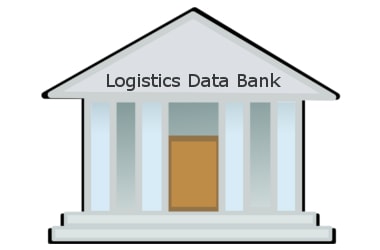 The Logistics Data Bank (LDB) project, unveiled in July 2016 to make India’s logistics sector more efficient through the use of Information Technology, will soon expand operations to the country’s southern region. The Logistics Data Bank (LDB) project, unveiled in July 2016 to make India’s logistics sector more efficient through the use of Information Technology, will soon expand operations to the country’s southern region.
So far, it had covered only the western logistics corridor.
The facility - where every container is attached to a Radio Frequency Identification Tag (RFID) tag and then tracked through RFID readers - aids importers and exporters in tracking their goods in transit.
This has, in turn, cut the overall lead time of container movement as well as reduced transaction costs that consignees and shippers incur.
It is billed as a major ‘ease of doing business’ initiative aimed at boosting India’s foreign trade and ensuring greater transparency.
The project covers “the entire movement (of containers) through rail or road till the Inland Container Depot and Container Freight Station.
The service integrates information available with the agencies across the supply chain to provide detailed, real-time information within a single window.
The LDB is being implemented through a Special Purpose Vehicle called Delhi Mumbai Industrial Corridor Development Corporation Logistics Data Services Ltd. (DLDSL).
This is jointly (50:50) owned by the Delhi Mumbai Industrial Corridor (DMIC) Trust and Japanese IT services major NEC Corporation.
On July 1, 2016, the LDB project was launched at the Jawaharlal Nehru Port, Mumbai.
From May this year, its operations expanded to the container terminals at Adani Port Special Economic Zone, Mundra and Adani Hazira Port — both in Gujarat.
So far, in all, the DLDSL provides container tracking services to around 70% of the container traffic in India.
The services include providing users the ‘average delivery time’ as well as notifications through SMS and email.
About 3.88 million containers (1.87 million import containers and 2.01 million export containers) have been tagged and de-tagged under the project until now.
Initial discussions on the LDB project were held in May 2012.
Talks were held on a regulatory framework from the Directorate General of Foreign Trade (DGFT) to ensure that all logistics players share data to make the project viable.
Later on, meetings were held between the DGFT, the shipping ministry and other stakeholders including the Tariff Authority for Major Ports regarding the regulatory framework on Mandatory User Charges (MUC) as well.
In November 2014, TAMP passed an order for levy of MUC for the project.
|
▼ NABARD launches e-Shakti for SHG digitisation [08-9-17]
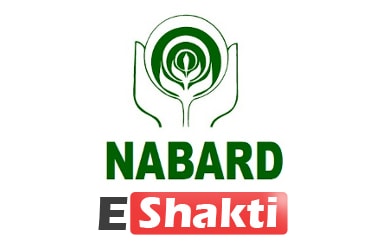 e-Shakti is a pilot project of National Bank for Agriculture and Rural Development (NABARD) for digitisation of Self Help Groups (SHGs). e-Shakti is a pilot project of National Bank for Agriculture and Rural Development (NABARD) for digitisation of Self Help Groups (SHGs).
It was initiated to address certain concerns like improving the quality of book keeping of SHGs and to enable banks to take informed credit decisions about the group through a Management Information System (MIS).
The project covers 25 districts and 1,30,176 SHGs have been digitised as on 31st March, 2017.
As per information compiled by NABARD, about 69,696 SHGs of the SHGs which have been digitised are credit linked as on 31st July, 2017.
No SHG has been de-recognised on account of, or, after digitisation.
The digitisation project does not impact the profit/ loss position of the SHGs.
|
▼ Pradhan Mantri Paridhan Rojgar Protsahan Yojana [08-4-17]
Under Pradhan Mantri Paridhan Rojgar Protsahan Yojana (PMPRPY), Ministry of Textiles will bear additional 3.67% share of the employer’s contribution of the Employers Provident Fund Scheme in addition to the 8.33% already covered under Pradhan Mantri Rojgar Protsahan Yojana (PMRPY).
This is for all new employees of apparel and made-up units enrolling in EPFO, for the first three years of their employment.
The Government has allotted INR 30 crores to the Ministry of Labour for FY 2016-17 and has made a provision of INR 200 crores for FY 2017-18.
As on 19.05.2017, 492 units have been registered under PMPRPY, which is reported to cover 1,82,400 new workers.
|
▼ India has 2nd highest number of internet users [08-3-17]
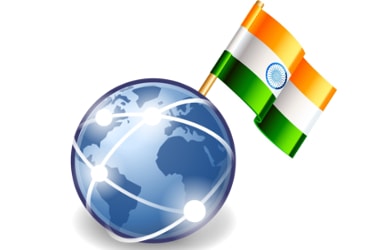 The Indian telecom industry has seen a paradigm shift from a voice centric market to a data-centric market. The Indian telecom industry has seen a paradigm shift from a voice centric market to a data-centric market.
While voice business still contributes a large chunk towards operator revenues, data revenues have shown an exponential growth trajectory over the last few years.
Towards the close of 2016 the number of internet subscribers in India was 391.50 million making India globally the 2nd highest in terms of internet users.
Mobile data traffic also grew by 76 per cent in India in 2016 primarily attributed to increased smart phone penetration.
This growing usage of smart phones, especially in urban areas, has increased the usage of internet on hand-held devices.
In 2016, 559 megabytes of mobile data was generated per month by an average smart phone, up from 430megabytes per month in 2015.
Consumption of video content is also forecasted to be 75 percent of India’s mobile data traffic by 2021, compared to 49 percent in 2016.
Advancements in innovative IoT technologies, like health monitors, smart transport, smart meters among others, is projected to result in 21 per cent increase in M2M services.
These advances will result in a significant growth of mobile data, and as the telecom sector moves to newer technologies, TSPs will need to identify innovative avenues to monetise this data opportunity.
The Indian Telecom Market is expected to cross the INR 6.6 trillion revenue mark by the year 2020.
The Minister said that Indian Government had launched the ‘Digital India’ initiative in July 2015 which had three broad targets -
- Digital Infrastructure as a core utility to every citizen,
- Governance and Services on Demand
- Digital empowerment of citizens.
One of the projects under the ‘Digital India’ initiative was ‘BharatNet’, launched to deploy high-speed optical fibre cables to connect 2.5 lakh Gram Panchayat across the country by 2018. This project would also help in increasing the fiberized sites in India which currently stands at less than 20 per cent as compared to other developed countries. The project is being implemented in Phases, with more than 100,000 gram panchayats connected under Phase-I as of July 2017 and states like Kerala, Karnataka, Chhattisgarh, Haryana, Uttar Pradesh and Madhya Pradesh neared 100 per cent completion. Major Achievements of the Indian Telecom Ministry- Over 400 million internet users
- FDI quadrupled in FY2016-17 recording inflow of approximately USD 5.6 billion
- Greater than 20 per cent tower sites now diesel free
- Rural Tele density increased by 30 per cent over the last five years
- More than 3/4th of the data consumption was from 3G/4G
- Telecom industry generates over 4 million jobs direct and indirect
- LTE device ecosystem grew by 270 per cent from 2015
- 38 new mobile manufacturing units set up since September 2015
- 30 new locations added to ‘Smart City’ mission in June 2017, total count reaches 90 smart cities
- The government, is also working aggressive to connect 54,000 unconnected villages and would speed up its efforts after getting due reports from all states.
- There is the inter-ministerial group to look into the financial health of the sector.
- The new Telecom Policy will be a key building block for achieving the growth target of 10 percent from the current 7.6 percent as Telecom and IT are the two sectors contributing to 16.5 percent to the GDP, and there are immense possibilities for it to go up to 25 percent.
|
▼ CANDI, the first digital banking branch of Canara Bank opens [08-2-17]
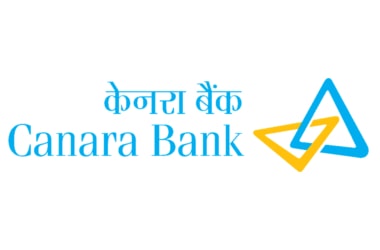 Canara Bank, which has set an ambitious target of moving to ‘paperless’ futuristic banking, launched its first ‘Digital Banking Branch’ at Spencer Towers in MG Road, Bengaluru. Canara Bank, which has set an ambitious target of moving to ‘paperless’ futuristic banking, launched its first ‘Digital Banking Branch’ at Spencer Towers in MG Road, Bengaluru.
Titled ‘CANDI’, the branch will provide an end-to-end digital experience to customers.
The bank, as part of the run-up to its digital foray, has introduced customer-friendly mobile apps which help customers get most of the information related to their accounts from the app without the need to visit the branch.
The most attractive feature of the Digital Branch is a humanoid robot that addresses basic queries of customers on banking products and services.
This is a first-of-its kind initiative by a public sector bank in the country.
The bank is in the process of re-inventing branch strategy and moving towards more digitisation and self-service channels.
The bank, to push its digital agenda, has equipped itself with a suite of next-generation banking tools which use advanced technology to streamline services and improve efficiency,.
The tools and devices include Customer On-Board Application which facilitates instant opening of Savings Bank account by the customer himself using fingerprint/ IRIS authentication.
Also on the anvil are printing of personalised debit card, cheque book, mobile/ Internet banking registration, generation of e-Passheet and issuance of virtual welcome kit.
There is an app-based token and queue management system to facilitate paperless appointment system using cloud technology and Digital Challan to facilitate filling up challans digitally by customers at their own convenience for services like cash deposit, fund transfer and cheque clearing.
There is a Digital Feedback System to get feedback from customers on the services availed by them and video banking to facilitate interaction with remote-site Subject Matter Experts on various categories of retail loans and corporate advances.
The branch works from 8 am to 8 pm on business working days.
There is also an interactive touchscreen-based ‘Touch Banking’ to enable the customers understand banking products like car loan, home loan, education loan, mutual fund, life/health insurance and apply online for the products.
|